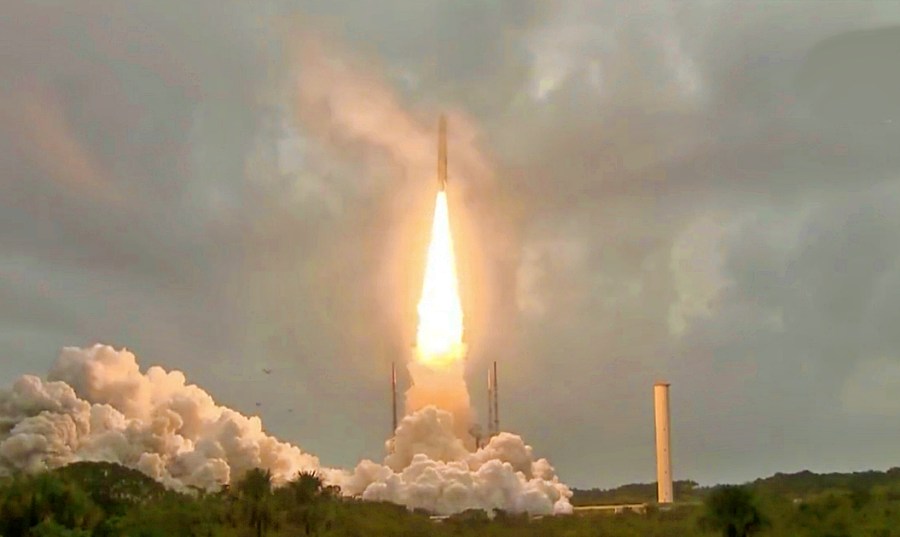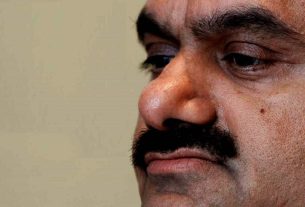Sat 25 December 2021:
The world’s largest and most powerful space telescope has launched on a high-stakes mission to see light from the very earliest stars and galaxies, as well as search the universe for signs of life.
On Saturday, NASA’s James Webb Space Telescope launched into the morning sky from French Guiana on South America’s northeastern coast, riding a European Ariane rocket.
Around the world, astronomers had eagerly waited to see Webb finally taking flight after years of setbacks. Last-minute technical snags bumped the launch nearly a week, then gusty wind pushed it to Christmas.
We have LIFTOFF of the @NASAWebb Space Telescope!
At 7:20am ET (12:20 UTC), the beginning of a new, exciting decade of science climbed to the sky. Webb’s mission to #UnfoldTheUniverse will change our understanding of space as we know it. pic.twitter.com/Al8Wi5c0K6
— NASA (@NASA) December 25, 2021
The $9 billion observatory hurtled towards its destination 1.6 million kilometers (1 million miles) distant, more than four times the distance between the earth and the moon. It’ll take a month to get there, then another five months for its infrared eyes to be ready to scan the cosmos.
First, the telescope’s enormous mirror and sunshield need to unfurl; they were folded origami-style to fit into the rocket’s nose cone. Otherwise, the observatory will not be able to peer back in time 13.7 billion years as anticipated, within a mere 100 million years of the universe-forming Big Bang.
“It’s going to give us a better understanding of our universe and our place in it: who we are, what we are, the search that’s eternal,” NASA Administrator Bill Nelson said earlier this week.
But he cautioned: “When you want a big reward, you have to usually take a big risk.”
Reporting from Kourou, French Guiana, Al Jazeera’s Manuel Rapalo said the historic mission which has “revolutionised astronomy” is “going to allow scientists to peer back in time to the early stages of our universe”
“Scientists are also going to be able to examine the atmospheres of planets and determine whether or not planets could not only be habitable and suitable for humans to possibly one day colonise, but to determine whether or not those conditions are optimal for life,” he said.
SOURCE: INDEPENDENT PRESS AND NEWS AGENCIES
_____________________________________________________________________________
FOLLOW INDEPENDENT PRESS:
TWITTER (CLICK HERE)
https://twitter.com/IpIndependent
FACEBOOK (CLICK HERE)
https://web.facebook.com/ipindependent
Think your friends would be interested? Share this story!





